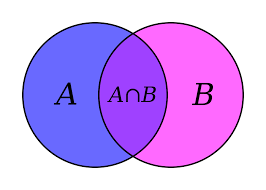Proof Involving Sets Explained

Proof involving Set:
When it comes to proofs involving sets, we use logical reasoning and set properties to establish relationships between sets. In these proofs, we rely on definitions and properties of set operations such as membership, subset, union, intersection, and complement.
1. a ∈ A:
This statement can be expressed as a ∈ A, where the symbol "∈" denotes membership. It means that element "a" belongs to the set A.
Example: Let's consider the set A = {1, 2, 3} and assume a = 2. In this case, we have a = 2 ∈ A because 2 is an element of set A.
2. A ⊆ B:
This statement can be expressed as A ⊆ B, where the symbol "⊆" denotes subset. It means that every element of set A is also an element of set B.
Example: Let's consider set A = {1, 2} and set B = {1, 2, 3}. In this case, we have A = {1, 2} ⊆ {1, 2, 3} = B because every element in set A (1 and 2) is also present in set B.
3. A = B:
This statement can be expressed as A = B. It means that sets A and B are equal, i.e., they have the same elements.
Example: Consider set A = {1, 2, 3} and set B = {3, 2, 1}. In this case, we have A = {1, 2, 3} = B because they have the same elements, even if the order is different.
4. Perfect Numbers:
Perfect numbers can be defined using a mathematical formula. A positive integer "n" is a perfect number if it satisfies the equation: σ(n) = 2n. Where σ(n) represents the sum of all the proper divisors of "n" (excluding the number itself).
Example: Let's consider the number 6 as a perfect number.
Explanation:
- The divisors of 6 are 1, 2, 3, and 6.
- Excluding 6 itself, the proper divisors of 6 are 1, 2, and 3.
- If we sum the proper divisors: 1 + 2 + 3 = 6, which is equal to 2n, where n = 6.
- Therefore, 6 is considered a perfect number.
In general, perfect numbers have been studied extensively, and the search for perfect numbers involves finding positive integers that satisfy the equation σ(n) = 2n. The concept of perfect numbers falls within the domain of number theory, which deals with the properties and relationships of numbers, including special number patterns and classifications.
In summary, the proof involving sets utilizes mathematical notation and logical reasoning to establish relationships and properties between sets. The concept of perfect numbers is defined using a mathematical formula and belongs to the field of number theory.